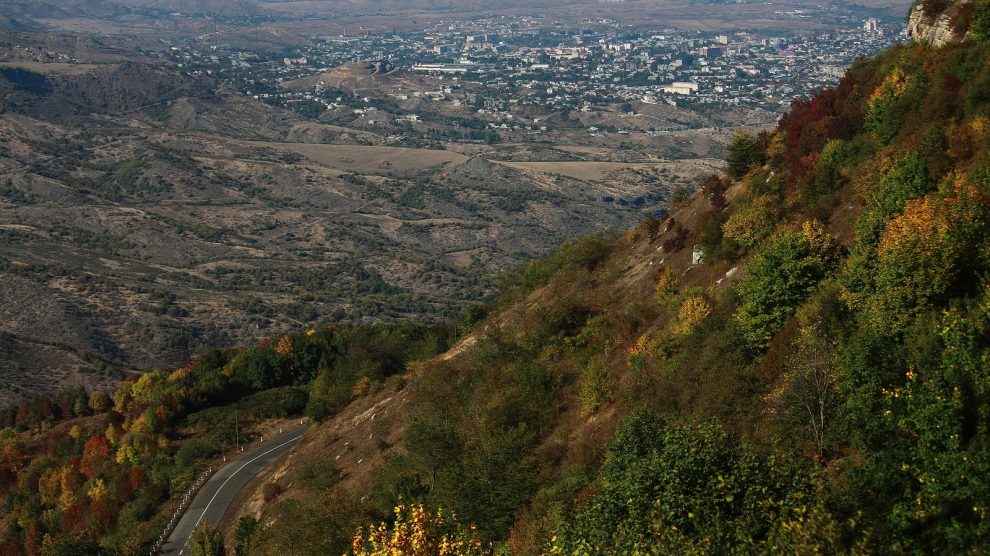For decades, Armenia and Azerbaijan have signed ceasefires, agreeing to end their conflict. But time and time again, these agreements have been violated, and it has only led to further bloodshed, pain, and suffering in the region.
Once again, Armenia and Azerbaijan find themselves in the international headlines. On September 19, Azerbaijani forces “launched heavy artillery fire against Armenian forces” in the Nagorno-Karabakh region. For decades, both countries have fought over the territory.
Thousands have died during the ongoing conflict, and several ceasefires were broken.
- Let down by Moscow, Armenia looks to the West
- Respite for Karabakh, but tensions between Baku and Yerevan remain high
- How reforestation can help bridge Armenia’s urban-rural divide
In the latest negotiations between the two countries in 2020, Armenia said it would relocate ethnic Armenians from Nagorno-Karabakh. The Armenian government announced it would “provide vouchers worth up to 25,000 US dollars for households to relocate”, but understandably, numerous families were reluctant to move. Armenian officials then promised the Azerbaijanis that ethnic Armenians would leave Nagorno-Karabakh by September 2022, but this target date was missed as well.
Growing impatient, Azerbaijan established a blockade over the Lachin corridor, the only road that links Armenia to Nagorno-Karabakh. For over 200 days, the Azerbaijanis limited the region’s access to food, medicine, and fuel. Numerous reports emerged that there were shortages within Nagorno-Karabakh, and that ethnic Armenians were going hungry.
Realising that Armenian officials still would not have their people entirely withdraw from the region, Azerbaijan launched an attack. The latest skirmish resulted in the deaths of over 200 people, and many more were wounded. The international community swiftly condemned Azerbaijan’s actions, and called for both sides to negotiate.
After intense hours of fighting, Armenian and Azerbaijani officials gathered to discuss a new ceasefire. In the agreement, the ethnic Armenians of Nagorno-Karabakh stated they would completely disarm their military force. The ceasefire also calls for Armenian forces to leave the region. But Armenian Prime Minister Nikol Pashinyan argued that Armenian forces could not leave Nagorno-Karabakh as Armenia “does not have an army in Nagorno-Karabakh,” thus contradicting the statement.
Meanwhile, Azerbaijan’s state news agency claimed that Azerbaijani forces were working to collect “ammunition and heavy military equipment” from Armenian forces in the region. Azerbaijani authorities also met with ethnic Armenians residing in Nagorno-Karabakh on the morning of September 21. Azerbaijani President Ilham Aliyev later announced that his country would reclaim the region.
Endgame?
It remains to be seen how matters will play out. For decades, Armenia and Azerbaijan have signed ceasefires, agreeing to end their conflict. But time and time again, these agreements have been violated, and it has only led to further bloodshed, pain, and suffering in the region.
More recently, Russia and Turkey have attempted to serve as mediating forces, but their efforts have been unsuccessful. Initially, Russia committed to having a peacekeeping force in the region, and Turkey would also monitor the situation. Domestic affairs, however, have prevented Russia and Turkey from fully being involved in Nagorno-Karabakh. For example, Russia’s ongoing and failed invasion of Ukraine has prevented Moscow from engaging more closely with its other interests in the region. Armenians have taken notice too, stating they feel that they can no longer rely on Russia for its protection. Meanwhile, Turkey has become preoccupied with its economic crisis, and this has limited its ability to serve in a mediator role in a greater capacity.
As a result, the European Union and the United States have attempted to step up their efforts in the region. For example, the EU established a mission to Armenia to “observe and report on the security situation along the Armenian side of the international border with Azerbaijan.” The programme would also seek to “contribute to human security in conflict-affected areas in Armenian and build confidence between Armenia and Azerbaijan.” While the mission is only a few months old, one might argue that the program has failed, given the recent renewed fighting in the region.
Meanwhile, the United States has sent millions of dollars in financial and humanitarian aid to the region. US Secretary of State Antony Blinken also met with Armenian Foreign Minister Ararat Mirzoyan and Azerbaijani Foreign Minister Jeyhun Bayramov to discuss the ongoing conflict over Nagorno-Karabakh. But American efforts to diffuse the situation have also been unsuccessful, as evidenced by Azerbaijan’s latest attack on Nagorno-Karabakh.
Overall, numerous countries and organisations have attempted to serve as mediators for the ongoing Nagorno-Karabakh conflict. Unfortunately, these countries and groups have been unable to find a successful breakthrough, and this has only resulted in a prolonged conflict with additional deaths and suffering.
But these entities continue their dialogue with Armenian and Azerbaijani officials, and the leaders of Armenia and Azerbaijan continue their discussions over Nagorno-Karabakh. If these efforts are abandoned, it will only lead to a larger, deadlier conflict.
Unlike many news and information platforms, Emerging Europe is free to read, and always will be. There is no paywall here. We are independent, not affiliated with nor representing any political party or business organisation. We want the very best for emerging Europe, nothing more, nothing less. Your support will help us continue to spread the word about this amazing region.
You can contribute here. Thank you.







Add Comment